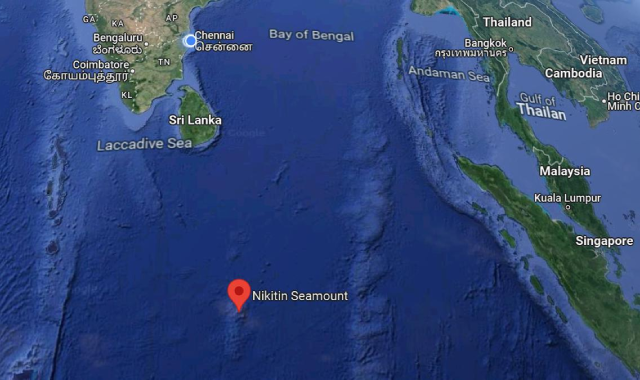India has recently applied for rights to explore the Indian Ocean seabed beyond its jurisdiction, including the cobalt-rich Afanasy Nikitin Seamount (AN Seamount), driven by concerns over Chinese reconnaissance activities in the region. However, Sri Lanka has already staked its claim to the area under a separate legal framework. The AN Seamount, situated in the Central Indian Basin approximately 3,000 km from India's coast, stretches 400 km in length and 150 km in width. Rising from a depth of about 4,800 meters to around 1,200 meters, it contains significant deposits of cobalt, nickel, manganese, and copper. Interested parties or countries must obtain an exploration license from the International Seabed Authority (ISBA), operating autonomously under the United Nations Convention on the Law of the Sea (UNCLOS), before proceeding with extraction. These rights are specific to open ocean areas, which constitute about 60% of the world's seas. Despite their potential mineral wealth, the costs and logistical challenges associated with extraction pose significant barriers.
What is Deep Sea Mining?
Deep-sea bed mining is the process of extracting valuable mineral deposits from the ocean floor, typically found at depths ranging from 200 to 6,500 meters beneath the surface. These mineral resources encompass a variety of materials, including copper, cobalt, nickel, zinc, silver, gold, and rare earth elements. The National Institute of Oceanography (NIO) has conducted tests on deep-sea mining systems at depths of up to 512 meters and is actively developing systems capable of operating at depths of up to 6,000 meters. Initially perceived as more costly than traditional land-based mining, advancements in underwater robotics, largely driven by the petroleum industry, have enhanced the feasibility of deep-sea mining operations.

Concerns Associated with Deep Sea Mining
- Environmental Damage: Deep sea mining poses a threat to marine ecosystems due to noise, vibration, and light pollution, along with potential leaks of chemicals used in the mining process. This damage could have severe repercussions for marine biodiversity and ecosystems.
- Sediment Plume Formation: The process of deep sea mining stirs up fine sediments on the ocean floor, leading to the creation of suspended particle plumes. These sediment plumes, sometimes reintroduced into the sea after extracting valuable materials, can harm filter-feeding species like corals and sponges, and disrupt various marine creatures.
- Impact on Marine Populations: Beyond affecting the seabed, deep sea mining could have broader consequences for fish populations, marine mammals, and the crucial role of deep-sea ecosystems in climate regulation.
- Effects of Digging and Gauging: Mechanical excavation and gauging of the ocean floor by mining machines can alter or destroy deep-sea habitats. Additionally, this activity may harm undiscovered species residing at greater depths in the ocean.
Path Forward
- Enhanced Regulatory Framework: Strengthening regulations and international agreements is paramount to promote responsible and sustainable deep-sea mining practices. This entails establishing rigorous guidelines addressing noise, vibration, and light pollution, alongside stringent protocols for handling and disposing of mining by-products and chemicals.
- Environmental Impact Assessments: Conducting comprehensive environmental impact assessments prior to granting mining licenses is essential. These assessments should thoroughly evaluate potential harm to marine ecosystems, biodiversity, and habitats, as well as assess the long-term implications for fish populations and marine mammals.
- Implementation of Mitigation Measures: Deploying effective mitigation measures is critical to minimize the adverse effects of deep-sea mining activities. This may include leveraging advanced technologies to mitigate noise and light pollution, implementing sediment control strategies to contain suspended particles, and devising innovative waste management techniques.
- Monitoring and Enforcement: Establishing robust monitoring mechanisms is vital for tracking the environmental impact of deep-sea mining operations. Regular inspections and stringent enforcement of regulations can ensure adherence to environmental standards and enable timely intervention in case of any breaches.









.webp&w=256&q=75)




